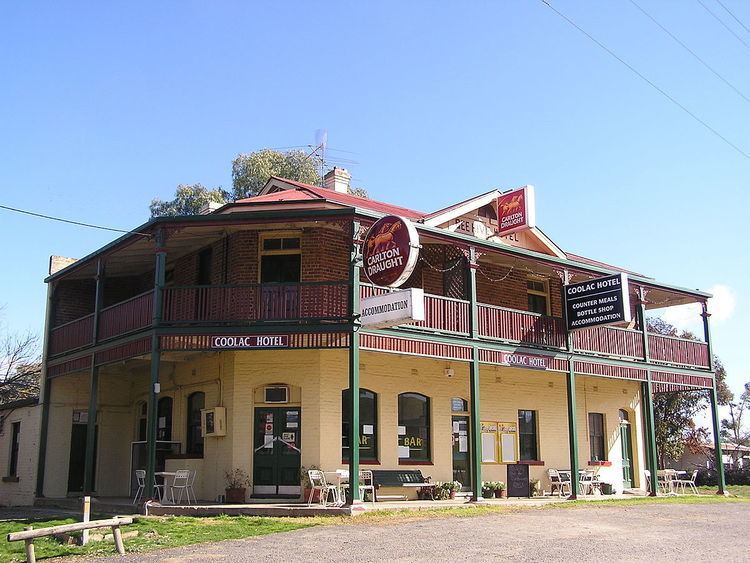Population 365 (2011 census) Postcode(s) 2727 County Harden Founded 1824 Local time Monday 8:48 AM | Established 1824 Elevation 308 m Postal code 2727 | |
 | ||
Location 353 km (219 mi) from Sydney103 km (64 mi) from Wagga Wagga21 km (13 mi) from Jugiong19 km (12 mi) from Gundagai Weather 17°C, Wind E at 5 km/h, 61% Humidity | ||
Coolac is a village in the Riverina region of New South Wales, Australia in Gundagai Council. At the 2011 census, Coolac had a population of 365.
Contents
Map of Coolac NSW 2722, Australia
The place name Coolac is derived from the local Aboriginal name for a plant which was abundant in the area and also from the Aboriginal word meaning "native bear".
Coolac Post Office opened on 1 June 1870.
The 11 kilometre section of the Hume Highway at Coolac was the last two-lane section of highway between Sydney and the Sturt Highway interchange. Since 1986, plans had been drawn-up for the Coolac bypass, with a review of environmental factors report completed in 1997 but construction did not commence until May 2007 with the project opening in August 2009 - Under AusLink.
In August 2009 the Coolac bypass was officially opened.
The satirical Bald Archy art competition (named from the more prestigious Archibald Prize) began in Coolac at the Coolac Festival of Fun, launched by Peter Batey. The home of this competition is now the Museum of the Riverina in Wagga Wagga and it also travels to Sydney and Melbourne for exhibition once Maude the Cockatoo, who is the official judge, selects the winning entries each year.
Coolac Geological Site
The Coolac Geological Site 48 kilometres (30 mi) north-east of Coolac, is the best known example in Australia of a substantial ophiolite assemblage. The distinctive rock assemblage over a 130-hectare (320-acre) site provides insights into events in the continental evolution of eastern Australia. The rocks here were part of the oceanic crust and mantle, normally not exposed on the Earth's surface. The rock from the mantle is called Coolac Serpentinite.
